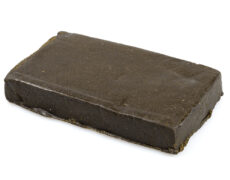Modified on: 26/04/2024
All the products you can smoke as alternatives to tobacco to reduce nicotine intake in the body : from cannabis to herbs, to electronic cigarettes
If you’re trying to quit smoking tobacco, you’ve come to the right place. Whether you’re a heavy smoker or just light up a cigarette during lunch and after dinner, you may need to find alternatives because, as we all know, smoking cigarettes is not good for your health.
Tobacco smoke, thanks to the many studies conducted on it, is now associated with serious health risks, including cancer, heart diseases, and respiratory problems. Despite informational campaigns and government restrictions, many people continue to smoke; a stressful day, the end of a work shift, finishing a meal, or enjoying a coffee with friends – these may seem like simple scenes from daily life, but for a smoker, they are typical moments to light up a cigarette. However, in recent years, interest in alternatives to tobacco has grown significantly, as many people have realized that they do not want to risk their health anymore.
Yet, 19% of the world’s population suffers from tobacco addiction, and in Italy, there are ten and a half million smokers (two million less than in 2022), and we hope that this number can decrease even more.
The causes of nicotine and tobacco addiction encompass both social and more complex psychological reasons. For these reasons, quitting smoking is very difficult. Unfortunately, tobacco and cigarettes are part of that social culture that promotes stressful lifestyles, far from the authentic balance of nature.
In this article, we will explore a series of healthy options and discuss examples and case studies that show how these alternatives can help people quit smoking.
Exploring Smoking Alternatives: A Safer Path to Health
As health concerns continue to rise, many adult smokers are seeking healthier alternatives to traditional tobacco use. Smokeless tobacco, such as chewing tobacco and dissolvable tobacco, is gaining popularity as a viable option. These smokeless forms offer a way to enjoy tobacco without the risks associated with smoking. Smokeless tobacco products are seen as a healthier alternative, delivering the satisfaction of tobacco without inhaling harmful smoke.
Chewing tobacco, a common form of smokeless tobacco, is favored by those looking to avoid the combustion and inhaling of toxic substances. It’s placed between the cheek and gum, releasing nicotine without the dangers of smoking. Dissolvable tobacco, on the other hand, is available in various forms, including lozenges, strips, and orbs. These convenient options provide a pure tobacco experience, offering mild psychoactive effects without the need to light up.
For those seeking even more innovative tobacco substitutes, smoking cannabis is another alternative gaining attention. But you have to pay attention, one thing is certain: smoking cannabis mixed with tobacco is worse than consuming it alone. While cannabis products come in various forms, they are often considered a healthier alternative to traditional tobacco. With cannabis becoming legal in more places, some adults are making the switch from tobacco to explore the potential benefits of cannabis.
White smokers, in particular, are exploring these alternatives to reduce the harm associated with their habit. Switching to smokeless products or pure cannabis can provide a path to better health without sacrificing the pleasure of tobacco or its satisfying rituals.
In conclusion, exploring healthier alternatives to traditional tobacco use, such as smokeless tobacco, tobacco substitutes, or cbd flowers, can be a safer path to a smoke-free lifestyle. These options address the health concerns linked to smoking while allowing individuals to enjoy the satisfaction they seek. Whether you are looking to quit smoking or seeking a healthier way to enjoy tobacco, these alternatives may be the solution you’ve been searching for.
The Problem of Tobacco Smoking
Tobacco smoking is one of the leading causes of preventable diseases worldwide. It contains over 7,000 chemicals, of which at least 250 are harmful, and over 60 are known carcinogens. It is notoriously associated with lung cancer, heart diseases, stroke, and chronic respiratory diseases. Every year, millions of people lose their lives due to tobacco.
Given the seriousness of this problem, it is essential to consider tobacco substitutes to help people quit smoking and find valid aids to fight nicotine addiction.
Below are some of the most promising options.
Exploring the Benefits of Smokeless Tobacco Products
What is smokeless tobacco? These are forms of tobacco that people use without burning them.
Smokeless tobacco products, often referred to as moist snuff or chewing tobacco, are gaining attention as a healthier alternative to traditional smoking. Smokeless tobacco products offer a unique option for those looking to enjoy tobacco without the harmful effects of inhaling smoke. With smokeless tobacco products, individuals can satisfy their cravings without the risks associated with smoking. These smokeless tobacco products provide a convenient and satisfying option for adult users who want to reduce their exposure to harmful substances and enjoy a more health-conscious approach to tobacco consumption.
Let’s see some smokeless tobacco products!


Electronic Cigarettes (E-Cigarettes)
Is vaping safer than smokeless tobacco?
E-cigarettes, or e-cigs, have become one of the most popular alternatives to conventional tobacco.
The first electronic cigarette entered the market in 2003, and since then, these products have gained widespread popularity. Now, twenty years later, e-cigarettes are in various colors, flavors, designs, capacities, weights, contents – in short, no two are alike, and the most famous brands think about them more of a design object than a functional device for quitting smoking.
In any case, if you want to quit smoking traditional cigarettes, you can choose from various products with different technologies.
Regular e-cigarettes heat a liquid (usually containing nicotine) that is then vaporized and inhaled, offering a simulation of the act of smoking without the combustion of tobacco, thus significantly reducing associated risks.
There are also disposable e-cigarettes available today, which have a tank containing flavored liquid, with or without nicotine, and in this case, it is also inhaled through the mouth.
Unlike regular e-cigarettes, disposable e-cigarettes do not have cords for recharging, have limited content, and therefore, once the total number of puffs is reached, they must be disposed of in special bins.
Still, in the world of electronic devices, you can use tobacco heaters, which differ from e-cigarettes because instead of heating liquids, they heat tobacco sticks through different methods; they do not burn tobacco like cigarettes, and they do not produce combustion, and they can work through induction, foil, or steel tip, generating tobacco vapor. This process significantly reduces the formation of harmful chemicals.
E-cigarettes have sparked debates about their long-term safety, but many studies indicate that they are less harmful than traditional cigarettes. It is important for non-smokers, especially young people, to avoid using e-cigarettes.
However, traditional smokeless tobacco products, such as loose leaf chewing tobacco and moist snuff continue to dominate the smokeless tobacco market.
Nicotine Replacement Therapies (NRT)
A valid alternative for quitting smoking is nicotine replacement therapy (NRT) which (we recommend only if you smoke more than 15 cigarettes a day) should be done with the patient’s full consent. The goal of replacement therapy is for the patient to take low doses of nicotine, a substance to which their body is addicted, from sources other than tobacco to avoid all harmful effects.
Replacement therapies include products such as chewing gum, patches, nasal sprays, and inhalers that provide controlled doses of nicotine to the body. These products help reduce withdrawal symptoms and are amo ng the best tobacco smoking alternatives.
NRTs are an effective tool for quitting smoking, but it is important to use them under medical supervision to determine the correct dosage.
Herbal Products
For centuries, popular culture has used blends of ayurvedic herbs rich in therapeutic virtues to inhale or vaporize. These are herbs with relaxing (each plant has its property) and tonic properties capable of relieving anxiety, stress, bad mood, or physical and mental fatigue. Unlike tobacco, they do not contain nicotine and do not pose a risk of addiction.
Each plant is used for different purposes: for spiritual ceremonies or to accompany meditation and seek contact with our inner self, freeing us from the oppressive burden of daily concerns.
However, the use of these plants should be controlled because not all of them can be inhaled or smoked, and especially not for too long, but only occasionally.
It is therefore good to understand which are the so-called “smoking herbs” and which are herbs to be mixed in infusions or other preparations.
One of the keys to quitting tobacco is to find an alternative that can offer similar benefits without the health risks associated with tobacco combustion. Herbal alternatives can offer an exit from addiction without compromising the lungs or the mind.
Herbs to Smoke: Damiana and Mint
Two popular herbs to smoke are damiana and mint. Damiana, originally from Central America, is known for its stimulating properties and can be an interesting substitute for tobacco. Mint, on the other hand, is a plant that offers a pleasant feeling of freshness and can be mixed with other herbs to create unique flavors.
Herbal Blends: A Creative Alternative
Many people try to create their own herbal smoking blends by combining various plants to obtain desired flavors and characteristics. This practice offers a wide range of possibilities to experiment with different flavors and stimulations depending on the properties of each individual plant.
There are therapeutic herbs such as passionflower or lavender, sage or wormwood. Then there are aromatic herbs like mint, rose, and anise. Of course, the experience is similar to that of joints but generally cannot be extended for too long.


Cannabis as an Alternative to Tobacco: Exploring Healthier Consumption Options
Among natural herbs, the cannabis plant is also an alternative to tobacco. However, it is important to emphasize that the use of cannabis must be legal and responsible, taking into account local laws and personal needs.
Cannabis has generated considerable interest in recent years due to its potential medical applications and is emerging as a possible alternative to tobacco. Some argue that the use of cannabis can help manage addiction and reduce the frequency of traditional cigarette smoking. This may be partly due to the relaxing effects and anti-anxiety properties of cannabis.
It should be noted that scientific research on cannabis as a tool to quit smoking is still ongoing. While some people claim to have successfully used cannabis to address addiction, further studies are needed to determine the effectiveness and safety of this practice.
In any case, it is worth noting that cannabis can be smoked without tobacco, thus avoiding the inhalation of toxic substances. There are also CBD-based products, such as CBD oil, which have many beneficial effects on the body. Rolling a joint by mixing tobacco with cannabis is a common practice worldwide, but it is equally common to smoke a joint without toxic substances. Some options for replacing tobacco in a joint may include substituting tobacco with another plant, using a dry herb vaporizer, or switching to CBD cannabis cigarettes.
Despite the potential promises of cannabis as an alternative to tobacco, there are also risks to consider. Excessive or uncontrolled use of cannabis can lead to addiction and have negative effects on the mind. Furthermore, cannabis may only be legally available in certain jurisdictions, and improper or unauthorized use may have legal consequences.
Herbal products can be an interesting choice for those who want to maintain the habit without using tobacco.
Behavioral Therapies
Behavioral therapies involve counseling or psychological support to address tobacco addiction. These therapies can help people develop strategies to deal with stress and situations that trigger smoking.
Behavioral therapies can be an essential component of success in quitting smoking and can be used in combination with other tobacco alternatives.
Conclusion
Smoking tobacco poses a serious threat to public health, but we have seen some of the best tobacco substitutes that can help people quit smoking, improving both mental and physical well-being, including electronic cigarettes or light cannabis. From electronic cigarettes to heated tobacco products, from tobacco replacement therapies to behavioral therapies, the options are diverse and customizable to individual needs.
However, it is important to note that none of these alternatives are entirely risk-free, and success depends on the individual’s motivation and commitment to quit smoking. Consulting a doctor or professional is essential to choose the best option and develop a personalized smoking cessation plan.
In conclusion, tobacco substitutes offer hope to those trying to quit smoking, improving their health and reducing the risks associated with traditional tobacco. Choosing the right solution is a fundamental step toward a healthier life with better alternatives to tobacco. At Justbob, we always strive to provide the right information and approach these topics with the necessary caution. If you’re interested in these topics, visit our blog and read articles on the potential of legal cannabis, hashish, or the world of tobacco in general!









